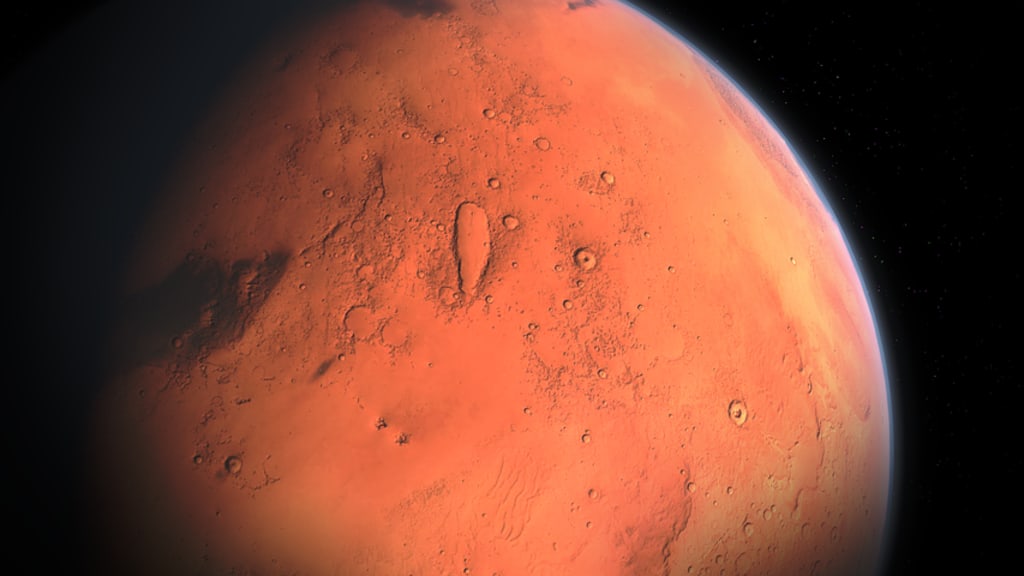
Mars, also known as the Red Planet, is the fourth planet from the Sun and the second closest to Earth after Venus. Mars has fascinated people for centuries, inspiring countless science fiction stories and even plans for human exploration and colonization. In recent years, Mars has been the subject of numerous missions by various space agencies, providing us with a wealth of information about the planet's geology, atmosphere, and potential for life.
Geology:
Mars is a rocky planet, with a surface that is covered by a layer of dust and sand. The Martian surface is characterized by a variety of features, including vast plains, towering volcanoes, and deep canyons. The largest volcano on Mars, Olympus Mons, is more than three times higher than Mount Everest, the tallest mountain on Earth. The largest canyon on Mars, Valles Marineris, is more than 4,000 km long and up to 7 km deep, making it one of the largest canyons in the solar system.
Mars also has several impact craters, formed by asteroids and comets colliding with the planet's surface. Some of these craters are so large that they can be seen from Earth with a telescope. In addition to impact craters, there are also signs of ancient liquid water on Mars, including dried-up riverbeds and mineral deposits that are only formed in the presence of water. These features suggest that Mars was once a much wetter and more hospitable place, with liquid water on its surface.
Atmosphere:
Mars has a thin atmosphere, with a surface pressure of only about 1% that of Earth. The atmosphere of Mars is primarily composed of carbon dioxide, with smaller amounts of nitrogen and argon. The Martian atmosphere also contains traces of water vapor and dust, which can cause global dust storms that can engulf the entire planet. These dust storms can last for several months and can have a significant impact on the planet's weather and temperature.
Potential for Life:
One of the most exciting questions about Mars is whether it has ever supported life, or if it still does. There is evidence that Mars was once a more hospitable place, with liquid water on its surface and a thicker atmosphere. This raises the possibility that life may have existed on Mars in the past, or may still exist today in some form.
In recent years, several missions have been sent to Mars to search for signs of life. These missions have provided us with valuable information about the planet's geology, atmosphere, and potential habitability. For example, the Mars Reconnaissance Orbiter has found evidence of large deposits of water ice on the Martian surface, and the Curiosity Rover has discovered organic molecules on the planet's surface. These findings have increased the likelihood that Mars could support life, either in the past or in the future.
Exploration and Colonization:
Mars has been the subject of numerous missions by various space agencies, including NASA, the European Space Agency, and Russia's Roscosmos. These missions have been aimed at learning more about the planet's geology, atmosphere, and potential for life. In recent years, there has been growing interest in the possibility of sending humans to Mars, both for scientific purposes and for the potential colonization of the planet.
However, there are significant challenges associated with sending humans to Mars, including the long distance from Earth, the harsh Martian environment, and the need for life support systems. Nevertheless, there are many organizations and individuals who are actively working to overcome these challenges and make human exploration and colonization of Mars a reality.
Mars is a fascinating planet that has captured the imagination of people for centuries. With its varied geological features, thin atmosphere, and potential for life, Mars has been






Comments
There are no comments for this story
Be the first to respond and start the conversation.